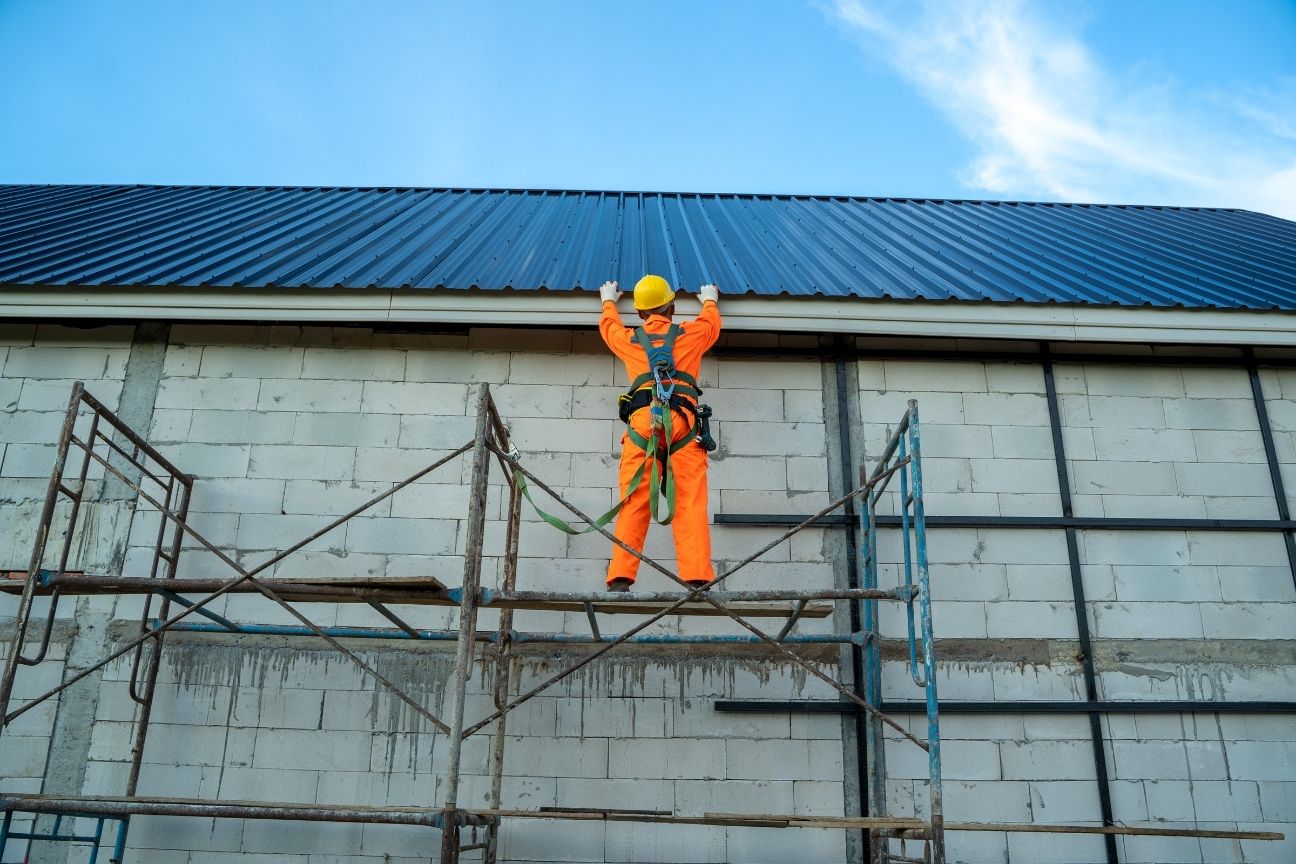In a rapidly changing world, the importance of effective emergency plans cannot be overstated. Effective planning lays the groundwork for preparedness and collaboration in times of crisis. However, many organizations still cling to outdated strategies that can hinder their ability to respond effectively. This exhaustive outline aims to uncover the consequences of sticking to the past and to explore approaches that bring emergency planning into the modern age.
Introduction
In today’s fast-paced world, contested emergency planning can put lives at risk. Organizations often rely on plans that don’t adapt to current threats. This oversight can jeopardize resources during crises. Continuous updates to emergency plans aren’t just helpful; they’re essential for effective responses.
An outdated emergency plan often reflects a lack of critical foresight. For example, many plans fail to consider recent developments in technology and societal behaviors, including cyber threats and global pandemics. The absence of relevant strategies can lead to confusion among responders during emergencies.
This blog aims to shed light on the detrimental effects of sticking to outdated emergency strategies. We’ll also discuss why regular updates are necessary for safeguarding lives and resources. By understanding the potential pitfalls of neglecting to modernize emergency plans, organizations can foster a culture of preparedness and resilience.
Finally, let’s explore how today’s emergency managers can change the narrative by proactively seeking improvements. Making preparedness a priority will ensure that communities remain safe and secure in the face of evolving challenges. After all, the best emergency plan is one that evolves just as swiftly as our world does.
The Evolution of Emergency Planning
Emergency planning has come a long way. Understanding its history helps us appreciate why updating plans is crucial today. Initially, emergency plans often focused on natural disasters, like floods or earthquakes. Organizations relied on rigid protocols and checklists. But as we faced new challenges, these outdated methods could no longer suffice.
Key Events Shaping Modern Emergency Response
Major incidents have prompted shifts in how we approach emergency management. For example, the September 11 attacks in 2001 sparked a complete reevaluation of security measures. This tragic event exposed vulnerabilities in existing plans and highlighted the need for real-time adaptability.
Following Hurricane Katrina in 2005, we saw further changes. The disaster revealed significant flaws in communication and coordination among agencies. In response, many organizations began prioritizing integrated emergency response systems. They recognized that collaboration across multiple agencies was essential for effective management.
The Influence of Technology
Technology has dramatically transformed emergency planning. Today, organizations use sophisticated tools to analyze data and forecast potential crises. For instance, geographic information systems (GIS) can identify high-risk areas and inform resource allocation. Moreover, social media platforms can disseminate timely information to the public during emergencies.
The rise of mobile applications has further enhanced our readiness. Citizens can now receive real-time updates, report emergencies, and access vital resources at their fingertips. These tools not only streamline communication but also empower communities to participate in their own safety.
Societal Evolution and Emergency Management
As society changes, so do the threats we face. The emergence of cyber attacks and public health crises, such as the COVID-19 pandemic, has added layers of complexity to emergency planning. Older plans often fail to address these contemporary challenges. Organizations must continuously adapt their strategies to encompass diverse scenarios.
In conclusion, the evolution of emergency planning highlights the importance of flexibility. By learning from past events and embracing modern technology, we can forge effective response strategies that meet today’s demands. Emphasizing continual assessment and innovation will ensure we stay one step ahead in our preparedness efforts.
Risk Assessment: The Foundation of Effective Emergency Plans
Risk assessment forms the backbone of any successful emergency plan. It identifies potential threats and evaluates the likelihood of their occurrence. Organizations that neglect this essential step often find themselves unprepared when disaster strikes.
The Need for Regular Updates
Emergencies are ever-evolving, and so are the risks associated with them. Today’s threats differ significantly from those of the past. For instance, while natural disasters have always posed risks, cyber threats and public health crises have surged in recent years. Regular risk assessments ensure that emergency plans address these modern challenges.
When organizations fail to update their risk assessments, they risk missing critical information. This oversight can lead to inadequate responses during crises, jeopardizing lives and resources. For example, a business that does not consider the impact of a pandemic in its emergency plan may face severe operational disruptions.
Real-World Failures from Inadequate Risk Assessment
Several high-profile incidents highlight the dangers of outdated risk assessments. During Hurricane Katrina in 2005, many emergency plans relied on outdated flood zone maps. As a result, the response was chaotic, leading to significant loss of life and extensive property damage.
Similarly, the COVID-19 pandemic exposed flaws in many organizations’ emergency plans. Those that hadn’t updated their risk assessments to include potential health crises struggled to respond effectively. They faced shortages of essential supplies and inadequate safety protocols, highlighting the critical importance of anticipating contemporary threats.
The Path to Effective Risk Assessment
To enhance emergency planning, organizations must implement a structured approach to risk assessment. Begin by identifying potential threats relevant to your specific context. This may include natural disasters, cyber threats, and even social unrest. Engage stakeholders to gather diverse perspectives and insights.
Regularly reviewing and updating risk assessments can help organizations stay ahead of emerging threats. Utilize data-driven analytics to identify trends and shifts in risk levels. This proactive approach will bolster your emergency plans, ensuring they remain relevant and effective in a dynamic environment.
In summary, risk assessment is crucial for developing robust emergency plans. Organizations must prioritize timely updates to address evolving threats. By doing so, they can enhance preparedness and ultimately improve response strategies during crises.
The Consequences of Sticking to Outdated Plans
Emergency plans, much like technology and societies, must evolve. Sticking to outdated methods can create significant roadblocks during crises. Understanding these consequences is crucial for effective management. Let’s dive into the key issues that arise from outdated emergency plans.
Inefficient Resource Allocation
Outdated emergency plans often lead to poor resource allocation. When organizations rely on old strategies, they may misdirect their limited resources. For example, during Hurricane Katrina, many agencies had pre-positioned assets based on outdated modeling. Resources were either over-allocated or failed to reach impacted areas in time. This inefficiency can lead to delays when every second counts.
Additionally, consider a scenario where a company prepares for a fire threat but ignores the risk of active shooters. If an unexpected threat arises, their resources may be entirely misaligned. This misfocus puts lives at risk and wastes valuable assets that could have been better utilized.
Delayed Response Times
A lack of updated protocols creates confusion when every moment matters. When emergency plans are obsolete, command structures become ambiguous. Decision-makers stall while they attempt to recall outdated protocols. For instance, during the 9/11 attacks, various agencies struggled to collaborate effectively. They were stuck in their silos, leading to significant delays.
Modern emergencies require swift actions. When organizations stick to previous strategies, they hamper their ability to respond efficiently. Current crises demand clear roles and responsibilities, which outdated plans fail to provide.
Lack of Relevancy to Contemporary Threats
Today’s world is full of complexities, including new threats like cyberattacks and disease outbreaks. Many old plans fail to address these issues adequately. If organizations ignore contemporary threats, they risk severe consequences. Consider the COVID-19 pandemic; many emergency plans did not account for global health crises. As a result, organizations struggled to implement protective measures effectively.
Moreover, outdated plans often overlook diverse scenarios. Effective emergency planning must encompass a range of potential incidents. This includes not only physical disasters but also technological challenges.
Best Practices for Developing Updated Emergency Plans
Updating emergency plans is essential for effective response strategies. To ensure readiness, organizations must embrace modern practices. Here are some best practices to consider:
Engaging Key Stakeholders
Collaboration is the backbone of effective emergency planning. Engaging key stakeholders leads to improved outcomes.
Consider these groups to involve in your planning process:
- Local government
- Emergency services
- Community organizations
Each group brings unique insights and expertise. Their input ensures that the plan addresses a wide range of scenarios.
Benefits of Stakeholder Engagement
- Diverse Perspectives: Gain a well-rounded view of potential challenges.
- Shared Ownership: Foster accountability and commitment.
- Clearer Roles: Clarify responsibilities within the plan.
Regular meetings help maintain open communication. This collaborative approach fosters a sense of ownership among all parties involved.
Regular Training and Drills
Training personnel is crucial for effective emergency response. Regular drills not only test the plan but also prepare individuals for real situations.
Key Advantages of Training
- Identify Weaknesses: Discover gaps in the plan before crises arise.
- Adapt to Current Threats: Schedule drills that reflect evolving risks.
- Continuous Improvement: Use feedback from training to refine the plans.
Remember, preparedness is not a one-time event; it requires ongoing commitment.
Incorporating Technology
Modern emergencies require modern solutions. Innovative technology can significantly enhance emergency response.
Tools to Enhance Readiness
- Mobile Applications: Facilitate quick communication.
- Data Analytics: Improve decision-making during crises.
- Integrated Platforms: Ensure seamless information access across departments.
Real-time data allows teams to make informed decisions quickly. By leveraging technology, organizations can respond faster and more efficiently.
Preparedness Tactics for a Dynamic Environment
In today’s unpredictable world, flexibility is paramount when crafting emergency plans. Traditional strategies, often rigid and outdated, can leave organizations vulnerable during crises. Therefore, adaptable plans are essential. This section explores how to maintain agility in planning and the importance of community involvement in preparedness.
Flexibility in Planning
Plans should evolve alongside changing circumstances. A flexible emergency plan allows organizations to adjust their strategies as new information emerges. Here are key strategies to ensure your plans can adapt:
Regular Review Cycles: Set a schedule for peer reviews of your plans. Quarterly checks help identify outdated assumptions and integrate new threats.
Scenario-Based Training: Use realistic scenarios to test your plans. These exercises should reflect current and emerging risks. Learn from each drill to refine your approach.
Feedback Loops: Foster an environment where team members can provide insights based on their experiences. Create forums for sharing lessons learned, both during drills and in real situations.
Cross-Function Collaboration: Engage multiple departments to ensure comprehensive perspectives. Involve IT when addressing cybersecurity threats or operations staff when preparing for logistical challenges.
Embrace Technology: Leverage tools that allow for rapid updates. Cloud-based platforms can facilitate real-time collaboration and ensure everyone has access to the latest versions.
By adopting these strategies, organizations can remain poised to respond effectively, no matter how unpredictable a situation may become.
Community Involvement
Another critical piece of modern emergency planning involves engaging the community. When emergencies strike, communities come together. But how prepared they are can make all the difference. Here’s why community involvement is vital:
Local Knowledge: Residents often have unique insights into community-specific risks and resources. Involving them can lead to more effective planning.
Building Trust: Regular interaction fosters trust between organizations and community members. This trust can facilitate smoother communication during a crisis.
Expanding Reach: Community members can act as force multipliers. When they understand the emergency plans, they can help disseminate information and mobilize support when needed.
Training Opportunities: Organize community drills and workshops. These events can empower residents and enhance everyone’s readiness to react during an emergency.
Collaborative Resources: By pooling resources and skills, organizations can maximize their preparedness capabilities. Partnerships with local nonprofits and emergency services can lead to a more resilient community.
In conclusion, both flexibility in planning and community involvement are crucial for successful emergency preparedness. Organizations that prioritize these tactics will not only enhance their own readiness but also strengthen their communities. As we face an increasingly complex landscape of threats, the importance of dynamic and collaborative planning cannot be understated.
Case Studies: Successes and Failures in Emergency Planning
Examining emergency planning through real-world case studies highlights significant successes and failures. These examples illustrate how updated plans can lead to effective responses, while outdated strategies may lead to disaster.
Success Story: The 2015 Nepal Earthquake Response
When the devastating earthquake struck Nepal in 2015, the country faced a monumental challenge. Fortunately, the emergency response was bolstered by a well-developed and updated plan that incorporated lessons learned from previous natural disasters. Key stakeholders collaborated through a coordinated effort involving:
- The government,
- Local NGOs, and
- International aid organizations.
A Coordinated Approach
The updated emergency plan clearly defined roles and responsibilities, ensuring rapid deployment. For instance:
- Local hospitals quickly mobilized,
- Aid agencies effectively distributed resources.
As a result, the response was relatively swift, saving many lives and allowing recovery efforts to start promptly. The flexibility of the plan enabled adjustments as new information emerged, showcasing the benefits of modern emergency planning.
Failure Example: Hurricane Katrina in 2005
Conversely, Hurricane Katrina serves as a cautionary tale of outdated emergency planning. In 2005, New Orleans faced one of the worst natural disasters in U.S. history. Despite advanced warning, the government’s response faltered dramatically.
Outdated Protocols
The emergency plans in place had not adapted to contemporary realities. Key issues included:
- Outdated protocols led to confusion,
- Delayed evacuation efforts, and
- Failure of critical communication lines.
These factors contributed to resource misallocation, severe chaos, and ultimately significant loss of life. Many organizations learned painful lessons from Katrina, realizing the urgent need for contemporary updates to their emergency strategies.
The Way Forward: Best Practices for Continuous Improvement
Updating emergency plans is essential for effective crisis management. Organizations must prioritize regular reviews to ensure their strategies remain relevant. In this section, we’ll explore several effective strategies for continuously improving emergency plans.
Embrace Regular Reviews
Start by setting a schedule for regular reviews of your emergency plans. These should occur at least annually or after significant events. During the review process, evaluate whether the current plans address emerging threats and changing environments. Regular updates ensure your organization is always prepared, no matter what arises.
Foster a Culture of Preparedness
Organizations should cultivate a culture that values preparedness. Encourage team members at all levels to share insights and suggestions regarding emergency strategies. Making preparedness a part of your organization’s DNA can lead to innovative solutions. When everyone feels empowered, improvement often follows.
Involve Diverse Perspectives
Engaging a wide range of stakeholders can enhance the planning process. Include employees from different departments, as they offer unique insights based on their experiences. Involving external experts can also provide fresh perspectives. This collaboration can help identify blind spots in your plans that may otherwise go unnoticed.
Implement Feedback Loops
After any training, drill, or real emergency, gather feedback from participants. Assess what worked well and what did not. This information is invaluable for refining your emergency plans. Encourage honest dialogue about weaknesses in the procedures and foster an environment where learning from mistakes is seen as an opportunity for growth.
Leverage Technology
Modern technology plays an essential role in ongoing improvements. Utilize software and mobile applications that support real-time updates and communication. Data analytics tools can inform decision-making and highlight trends in incidents. Staying abreast of emerging tools can streamline your emergency planning efforts significantly.
Test Plans Regularly
Frequent testing of emergency plans through drills or simulations is crucial. These exercises help identify gaps in response procedures and allow for real-world practice. Adjust plans based on insights gained from these drills. This proactive approach ensures your strategies remain robust and effective under pressure.
Conclusion
Outdated emergency plans are a threat to effective crisis management. They can limit an organization’s ability to adapt to new challenges. We’ve explored how sticking to old strategies increases the risk of inefficient resource allocation, delayed response times, and a lack of relevance to modern threats.
Adaptability is paramount. When plans are static, they fail to address the evolving landscape of risks. Collaboration among stakeholders – from local authorities to community members – strengthens preparedness. Modern strategies, like incorporating technology and conducting regular drills, enhance readiness.
Organizations must prioritize continuous improvement. Regularly reviewing and updating emergency plans ensures they remain applicable. It fosters a culture of proactive planning.
In closing, it’s time for organizations to step away from outdated practices. Embrace adaptability, strengthen collaboration, and implement modern strategies. By doing so, we can better equip ourselves for whatever challenges lie ahead. Let’s inspire actionable change and enhance preparedness in our communities.







